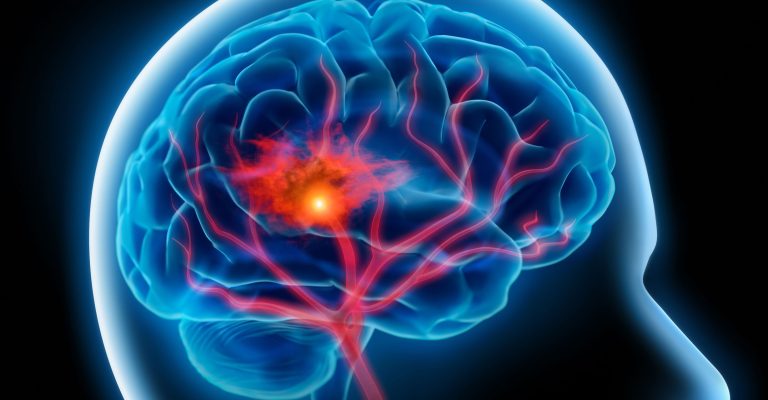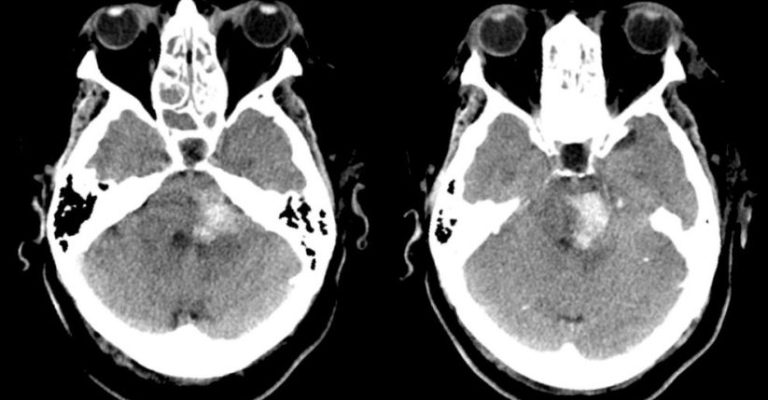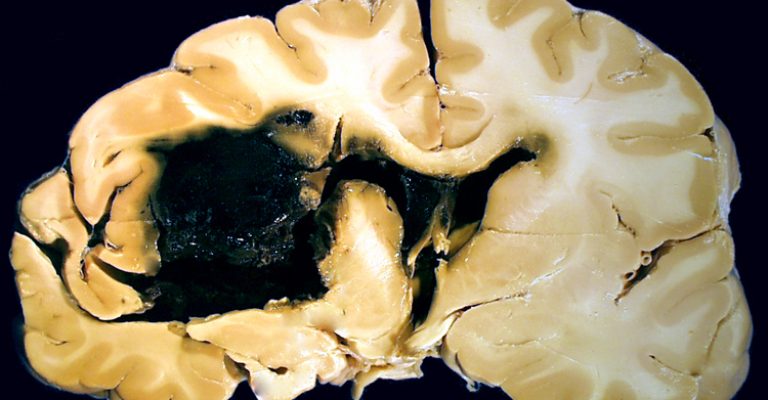
Are you familiar with Acute Pontine Stroke? This article will tell you what it is, what it feels like, and what you can do about it.
According to recent data from the Centers for Disease Control and Prevention, a stroke affects one American every 40 seconds.
Even though some stroke victims may be left with permanent motor impairments, most can recover fully with prompt medical care and participation in a quality stroke rehabilitation program.
Pontine cerebrovascular accident, or pontine CVA, is a kind of ischemic stroke affecting the brain stem’s pons area. Particularly catastrophic, a pontine stroke can cause paralysis and the highly unusual Locked-in Syndrome (LiS).
Some studies suggest that eighty percent of strokes can be avoided. This article will discuss a natural approach to preventing, along with pontine stroke risk factors and basic brain stem anatomy.

Ischemic strokes happen when a blockage in a blood vessel cuts off or significantly slows blood flow to the brain.
According to the National Stroke Association, ischemic strokes account for almost 90% of all strokes, and 10% of ischemic strokes occur in the brain stem. A cerebral infarction (CVA) in the pons causes damage to this part of the brain stem.
Let’s review some basic anatomy first to grasp the brain stem’s significance and the pons’ structure.
The brain stem is located at the base of the brain, between the spinal cord and the two hemispheres of the brain, and is responsible for regulating the CNS.
The pons, medulla oblongata, and mesencephalon make up the three major regions of the brain stem (metencephalon).
Each of these may regulate various operations. The brain stem regulates vital bodily processes like breathing, heart rate, blood pressure, swallowing, and more.
But what happens if you have a pontine stroke? Take a peek.
When the brainstem is damaged, it can cause significant motor function impairment and other problems.
Depending on the extent and location of the pontine stroke, a patient may have a wide range of symptoms.
This because various parts of the brain stem and the pons require the services of particular cranial nerves for their proper functioning. When muscle coordination is impaired, ataxia is one possible outcome of a stroke in the pons’s posterior region. Dizziness, vertigo, and double vision are other common signs of a pontine stroke.
Some people who suffer a pontine stroke also develop swallowing problems, speech impairments, numbness, and sometimes even paralysis on one side or both. Pontine strokes can sometimes cause Locked-in Syndrome, a sporadic neurological disorder (LiS).
Patients with LiS have complete or almost complete body paralysis but retain all of the mental and bodily functions they had before the stroke. Most people with LiS maintain eye movement control, provided that their midbrains have not been affected by the disease.
Many people who have had a stroke may undertake a specialized rehabilitation program to address the impairments caused by the stroke.
This may involve the use of medication as well as physical and occupational therapy to restore motor abilities. Changes to a person’s environment, such as their home or wardrobe, may also be required to compensate for these impairments.
Also, patients who have lost the ability to perform daily tasks because of a stroke can benefit from occupational therapy.
Patients deemed medically stable after a stroke can begin therapy immediately.
Although many people who have suffered a stroke may benefit from these rehabilitation methods, some will still be left with a permanent disability.
This is why prevention is better than treatment. Thank goodness, there are ways to prevent this crippling disorder. Let’s explore them.

Consult your doctor and neurologist to learn about your stroke recovery outlook. The severity of your prognosis and how likely you are to make a full recovery after a stroke depends significantly on where in the brain you suffered the damage.
For instance, when only one side of the pons is damaged, the prognosis for the patient is often optimistic. Similarly, recovery is typically speedier when damage is limited to the lateral to middle pons.
However, the outlook is usually not as good for patients who have suffered from bilateral or caudal (lower) pontine infarctions.
A condition like locked-in syndrome, in which one side of the pons is damaged, increases the likelihood that both sides of the body would be impacted.
This data can be used as a general guideline for stroke recovery, but it’s essential to remember that everyone’s experience is unique. The road to recovery is unique for each person who suffers a stroke.
Some people who survive a pontine stroke may need long-term care, while others with similar disabilities may regain a high level of independence.
Your prognosis, in the end, is only one element among several that affect your chance of recovery. The recovery outcomes are also significantly affected by the rehabilitation intensity.
Each year, strokes affect about 800,000 people in the United States, making them the most significant cause of permanent disability.
Fortunately, the risk of stroke can be lowered by making a few simple changes in one’s daily routine. High blood pressure increases a person’s lifetime risk of stroke by about four times.
Dietary changes alone may not be enough to treat hypertension, but they can significantly impact it.
Reducing sodium intake, eating more fruits and vegetables daily, and avoiding foods rich in cholesterol are all practical approaches to lower blood pressure and, by extension, a person’s stroke.
Exercising can help reduce the risk of stroke by lowering blood pressure and aiding in weight loss. Stroke risk may be reduced by as much as 27 percent if people adhere to fitness routines consisting of 30 minutes of low-intensity physical activity five days a week, according to the Stroke Association.
When trying to lose weight healthily, it’s recommended that you consume between 1,500 and 2,000 calories a day (depending on your activity level and BMI, of course).
Stroke risk can be reduced by avoiding or drastically reducing the use of harmful substances and behaviors, such as excessive alcohol consumption and smoking cigarettes.
Stroke risk can be reduced with medication if conditions like atrial fibrillation, diabetes, or high blood pressure do not improve with lifestyle adjustments.
It’s never too late to make positive changes to your health if you or a loved one are at risk of having a stroke. Start making positive changes toward a healthy lifestyle right now!
Also Read: Stroke rehabilitation